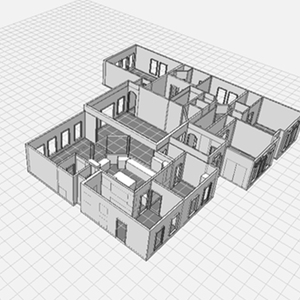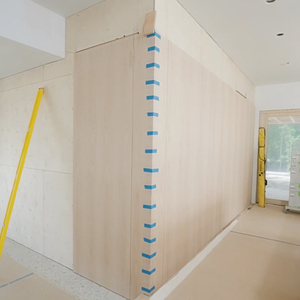I went to visit my Mom this evening, and found my step father (a great guy, but not the most patient when it comes to finding the right solution for a repair project) in the midst of trying to repair a broken drainage tile. his approach clearly has flaws, but since its a complicated situation, i can’t figure out how to improve it. unfortunately, they don’t have the $ to pay someone to do it, and at 70 years old my stepfather isn’t what he used to be when it comes to htis kind of thing.
so, the situation is this: the house is situated on the side of a hill. downspouts from several points across the front of the house collect into an underground clay drainage tile that drains off-site. after a heavy rain, the drainage tile backed up out of a floor drain located in a below grade section of an outdoor patio. stepfather called the plumber, who snaked the drain. unfortunately for my step-faterh, the snake popped up out of Mom’s prized flower bed…
Fast forward three days, and stepfather has dug up mom’s flower bed (that’s a different story….). Here’s what I could see with a weak flashlight: step-father has dug a hole that extends about 8″ to 12″ underneath a stone and mortar retaining wall to reveal where the break occured, and has removed about 3′ of the original clay drain tile. On the uphill side, there is a tile “tee” which incorporates one of the aforementioned downspouts into the main drainline. the break is on teh downhill side of the tee. the tee appeared intact, however the break occured at the tee, with shards of the drainpipe still in the tee fitting. it would be a MAJOR job to remove the retaining wall, shrubs, etc and get at the tee directly. on the downhill side, there is easy access to the rest of the drain line.
1. how can i get a clean break on the downhill side? once i get a clean break, could i use a neoprene sleeve with a compression fitting to join to PVC? will i be able to find PVC with the same OD as the clay?
2. if number one works, then how can i join to the uphill tee? this is the hard question, obviously… is there a tool to bore the broken clay pipe out of the tee? (i know that such tools do exist for PVC)
3. is there another way to get at this???
Thanks in advance for your thoughts on this. Whatever help you can give is much appreciated!



















Replies
not answering all your Qs but I'd find a tee that would fit over/around the clay tile and not inside it, if possible. You thinking about using the rigid PVC or the flexible black paltic corrugated stuff? I'd think it'd be easier using the flex. Cover all the joints with filter fabric or something else to prevent dirt infil to the tile/pipe.
Clean break on the tile? Chisel & hammer should work, the tile isn't all that hard.
Plumbers use the same tool to snap a clean break in clay tile and cast iron. Doesn't sound like you have enough room to use such a tool so you might try cutting it with an angle grinder with a diamond blade.
good luck
When faced with trying to get a clean cut on old, fracture-prone clay tile in dicey situations, I've taken a 4-1/2" grinder with a composite disk that I've worn down on some concrete until it'll fit inside the pipe. This lets you cut the pipe all the way around without having to excavate as much, and the dirt helps stabilize the pipe while cutting so it doesn't crack as easily while you're messing with it.
They make rubber sleeves that work well to join clay to PVC. If you care, you may want to try to find one that has the stainless steel coverings to help protect the fitting. Don't try to find PVC the same OD as the clay. The fitting is made to correct for that.
I'm not sure I have the picture about the Tee. You may be able to grind the pipe out from the inside with the grinder, as above. Or, you may just be able to join in to the Tee with a rubber connector on the exterior, leaving the pipe fragments inside the hub.
Mike Hennessy
Pittsburgh, PA